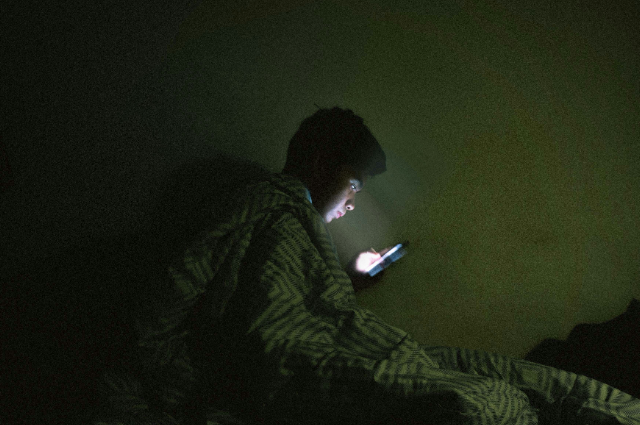
Every time we discuss radicalization online in India, we default to individual morality rather than systems. We say young people became angry. We say algorithms fed them what they already believed. We say they fell into the wrong echo chambers. We say free speech is messy, but the internet is free. All of this is convenient because it shifts the accountability away from the architecture itself and onto the person. It lets the platforms stay invisible.
The first time I realized this, I was in Constitutional Law class reading Shreya Singhal v. Union of India. The judgment struck down Section 66A of the IT Act and celebrated free speech online. It felt liberating and progressive. But hidden in all of that, the Court also cemented a philosophy: platforms are not liable for user-generated content as long as they comply with takedown procedures. We call that “safe harbour.” It sounds like freedom, but in practice, safe harbour plus profit maximization creates a perfect environment for virality without shame. Platforms are not newspapers. They do not curate in advance. Every second, they run a commercial casino of attention, and they learned fast that the easiest attention to monetize is rage. Political rage. Religious rage. Caste rage. Sexual anxiety. Us versus them. If I had to summarise radicalization in India in one line, I would say this: it is not the internet that radicalized a generation, it is the business model of the internet that radicalized a generation.
And that distinction matters. Because if we want to talk about law, we cannot talk only about criminal law. We must talk about platform law. The intermediaries. The ones who hold more power than the state, but are not accountable to any democratic mechanism. In 2021, India amended the IT Rules. The Intermediary Guidelines and Digital Media Ethics Code introduced “due diligence” obligations for platforms. Everyone called it censorship. Twitter called it authoritarian. The media called it dangerous. Civil libertarians called it regulatory overreach. I agree there are risks in state control. I am not romanticising government policing. This is a delicate balance. But no one asked the fundamental question: what is the alternative? If platforms are not bound to any duty to prevent civic harm, then who protects the citizen? You cannot have an internet where billion-dollar foreign corporations control the sentiment of an entire subcontinent, but the state remains minimal, and the courts stay neutral. This is not neutrality. This is surrender painted as freedom.
Every time someone is radicalized, we blame the individual. The boy who believed in a conspiracy. The woman who reposted propaganda. The teenager who became communal. The college student who slipped into extremist ideology. We shame the user because we cannot see the architecture. Radicalization is not a coincidence. It is a by-product. The algorithm is the new legislature. The attention economy is the new enforcement. The platform is the new sovereign. And we have no real jurisprudence that confronts this honestly. The core philosophical imbalance is simple: law is slow, the internet is immediate. Law requires evidence, platforms require engagement. Law assumes rational, informed adults; the internet is engineered to bypass reasoning entirely. We are now in a crisis.
The way forward must begin with a fundamental legal realization: intermediary liability is not automatically censorship. Intermediary liability can also be democratic accountability. I am not saying we revive 66A. I am not saying criminal law should be weaponized to silence dissent. I am not saying the government should have an instant kill switch. I am saying platforms cannot pretend they are neutral when they actively shape attention in manipulative ways. We need a new jurisprudence, a new legal category between censorship and impunity. The European Union is already doing this with the Digital Services Act. The US is having the Section 230 debate openly. India is still stuck in 2015 free speech nostalgia and has not caught up with the reality that free speech platforms are not passive libraries. They are active amplifiers.
If financial intermediaries have duties because their activity influences the real economy, speech intermediaries should not get total exemption while they influence public morality, elections, violence, and collective consciousness. The future of Indian free speech cannot be built only on preventing state censorship. It must also consider private power and private amplification.
When I look at my own generation, I feel sad. We were not taught to think. We were taught to scroll. And when the scrolling shaped our thoughts, we blamed the thinker. This is why I wrote this piece. Because radicalization in India is not the story of individual moral collapse. It is the story of an entire nation that outsourced its intellectual space to the market. If we keep pretending this is natural evolution, we allow harm to continue unregulated. We need to stop that illusion. The next constitutional milestone in free speech in India will not be about words; it will be about architecture. The next battle is not about what speech is legal or illegal. The next battle is about who controls what speech gets oxygen in the first place.
References
- Shreya Singhal v. Union of India (2015) 5 SCC 1.
- Information Technology (Intermediary Guidelines and Digital Media Ethics Code) Rules, 2021.
- European Union Digital Services Act, 2022.
- Tarleton Gillespie, “Custodians of the Internet” (Yale University Press, 2018).
